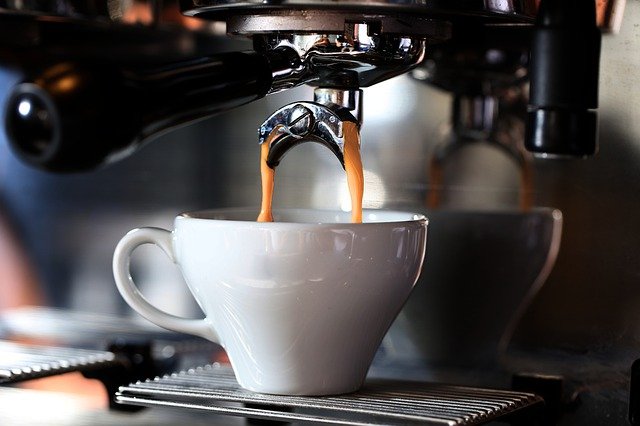
Gaggia Classic Pro vs Rancilio Silvia: Which Should You Buy?
The Gaggia Classic Pro and Rancilio Silvia are two classic espresso machines that have been in the market for many years. Which one should you get?
The Gaggia Classic Pro and the Rancilio Silvia are both very high-quality espresso machines that combine excellent build quality, impressive performance, and good value for money. They’re both built to last, with heavy duty metal frames that will withstand years of use in any kitchen. When it comes to performance, the two machines are evenly matched: they’ve got boiler pressure gauges on their front panels so you can see at a glance how much steam power is available; PID temperature controls with an adjustable pre-infusion for better extraction; dual brass boilers which provide steaming stability; and 15 bars of pump pressure – more than enough to extract rich flavours from even dense coffee grounds.
It’s a constant battle for buyers to find the perfect espresso machine. Today we will be comparing two popular models, the Gaggia Classic Pro vs Rancilio Silvia. The differences between these machines are many, but they also have similarities that make it difficult to decide which one is best suited for your needs. We’ll go over what each machine offers as well as their respective pros and cons so you can make an informed decision on which model is right for you.
Table of Contents
Gaggia Classic Pro
Gaggia Classic Pro is a semi-automatic espresso machine that has been around since the early 1990s. It was one of Gaggia’s first successful machines and continues to be popular today.
The Classic Pro is simple to operate and comes with a variety of features, including: a Pannarello wand for frothing milk, an automatic boiler refill system, a cup warmer, and an electronic steam valve. It also has a built-in water filter and can accommodate both pods and ground coffee.
One thing to note about the Classic Pro is that it’s not as compact as other machines on the market. So if you’re looking for something that takes up less counter space, you might want to consider another option.
Overall, the Gaggia Classic Pro is a reliable and affordable machine that’s perfect for both beginner and experienced espresso drinkers. If you’re looking for a quality machine that won’t break the bank, the Classic Pro is a great option.
The Pros Of Gaggia Classic Pro
The Gaggia Classic is a semi-automatic machine that comes with an attached burr grinder. It’s unique because it can be used both for making espresso, brewed coffee, and Americano.
Compact : This espresso machine has a very small footprint. You can easily store it if you live in a small house or apartment without taking too much space. The size makes it ideal to take on vacation with you!
Number of drinks : The gaggia classic pro offers you the option to make any drink at the touch of a button. You don’t need to own five different since this one does all that for you.
Simple to use : The machine is simple to set up and even easier to operate. If you’re a beginner, it’s a great model to start with because it doesn’t have all the bells and whistles of more expensive machines.
Consistent drinks : One of the best things about this machine is that it produces consistent drinks every time. You don’t have to worry about your coffee coming out differently each time you make it.
Many people consider the Gaggia Classic Pro an excellent starter espresso machine because of its ease of use and low price point. If you’re looking for an inexpensive way to get into the world of espresso brewing, this is a great option!
Rancilio Silvia
Rancilio Silvia is a high-quality espresso machine that has been around since 1998. It’s often considered the best home espresso machine on the market, and it’s popular among coffee enthusiasts for its durability, quality construction, and consistent performance.
The Rancilio Silvia uses a commercial-grade boiler to produce quick heat-up times and consistent results. Additionally, its PID controller ensures that the water temperature is always within two degrees of your desired setting, which helps you create perfect espressos time after time.
The Rancilio Silvia also comes with a number of handy features, such as a cup warmer, an adjustable steam wand, and an automatic purge function. Plus, it’s available in a variety of finishes to match your home’s decor.
The Pros Of Rancilio Silvia
If you are in the market for a quality espresso machine, you may be wondering if the Rancilio Silvia is a good option. This machine has a lot of great features that make it a top choice for many coffee lovers. Here are some of the pros of owning a Rancilio Silvia:
– Quality construction
The Rancilio Silvia is made with high-quality materials, which means it will last for years. It is also backed by a warranty from the manufacturer, so you can rest assured that your machine will be covered in the event of any problems.
– Excellent espresso
One of the main reasons people choose the Rancilio Silvia is because it produces excellent espresso. This model has a commercial-style thermosyphon boiler which ensures that the water remains heated at an ideal temperature throughout the entire brewing process. You can be sure that your shots are full of flavor and have the perfect amount of crema on top.
– Solid design
The Rancilio Silvia is known for its solid construction, so you won’t have to worry about it breaking down any time soon. Coffee lovers love this machine because it looks great and has an elegant design, making it a great fit on any coffee bar or kitchen countertop.
– Accurate steam wand
One of the main complaints with many home espresso machines is that they do not produce enough steam power. However, the Rancilio Silvia features an accurate steam wand that allows you to create perfect steamed milk for lattes and cappuccinos.
– User-friendly
This machine is very user-friendly, which makes it easy for anyone to operate. Even if you don’t have a lot of experience with espresso machines, you will be able to make great shots with the Rancilio Silvia.
Overall, the Rancilio Silvia is a great choice for anyone looking for a quality home espresso machine. It has many features that set it apart from the competition, and it is sure to please even the most discerning coffee lover. So if you are in the market for a new machine, be sure to consider the Rancilio Silvia. You won’t be disappointed.
Similarities between Gaggia Classic Pro vs Rancilio Silvia
When it comes to choosing between a Gaggia Classic Pro vs Rancilio Silvia, there are some similarities that you should take into account. Both machines use a commercial grade boiler, which means that they can produce a lot of steam and pressure. This is great for coffee enthusiasts who want to make café-quality drinks at home.
Another similarity is that both machines have PID controllers. PID stands for proportional integral derivative, and it helps to ensure that the temperature remains consistent throughout your drink. This is important because it results in better tasting coffee.
Finally, both machines are made from high quality materials. This means that they will last for many years if properly taken care of. So, if you’re looking for a machine that will produce coffee that is on par with what you would get at your favourite café, then either the Gaggia Classic Pro or the Rancilio Silvia would be a good choice.
Gaggia Classic Pro vs Rancilio Silvia Comparison
When it comes to choosing between a Gaggia Classic Pro and a Rancilio Silvia, there are some key differences that you should take into account.
Gaggia Classic Pro vs Rancilio Silvia – The first thing to consider is price. The Gaggia Classic Pro is considerably cheaper than the Rancilio Silvia. This may be an important factor if you are on a tight budget.
However, the Rancilio Silvia is considered to be of a higher quality than the Gaggia Classic Pro. It has a more solid build, and its components are made from better materials. This means that it is likely to last longer than the Gaggia Classic Pro.
Another difference between these two machines is their steaming capability. The Gaggia Classic Pro has an excellent steam wand. It is capable of producing warm, creamy milk for your cappuccinos or lattes in no time at all.
The Rancilio Silvia’s steam wand leaves something to be desired in this department. Consequently, if you want a machine that can produce great frothy milk for your drinks, the Gaggia Classic Pro may be the right choice for you.
When it comes to coffee extraction, both of these machines do an excellent job. They use high quality components and advanced technology to ensure that your beverages are strong and flavourful every time. Although they perform similarly well when it comes to grinding beans and extracting coffee, some people find that the Rancilio Silvia has a slightly richer flavour.
So, which machine is right for you? If you are on a tight budget and you just want a basic espresso machine that can make great coffee drinks, the Gaggia Classic Pro is a good option. However, if you are looking for a machine that is built to last and has superior steaming capabilities, the Rancilio Silvia is the better choice. Whichever machine you choose, you can be sure that you will enjoy delicious espresso beverages every time.
FAQs About Gaggia Classic Pro vs Rancilio Silvia
How do you make espresso in Gaggia Classic Pro?
There are a few things you need to do in order to make espresso in your Gaggia Classic Pro. First, you need to make sure that the machine is properly set up. This means making sure that the water tank is full and the coffee grounds are in the portafilter. You should also make sure that the machine is turned on and heated up before you start brewing.
Once the machine is ready, you can start brewing espresso. Begin by filling the water tank with cold water. Next, place a cup or demitasse cup under the coffee spout. Then, measure out about 18 grams of coffee beans and grind them into a fine powder. Finally, insert the portafilter into the machine and lock it into place.
After that, turn the controls of the machine to the espresso setting. This will allow hot water to flow through the portafilter and produce espresso. When you hear about four seconds worth of “whirling” sounds, stop the machine by moving the brew switch back towards you. The coffee should stop flowing out of the portafilter after 10 or 12 seconds.
Gaggia Classic Pro vs Rancilio Silvia – Pour some cold water into a glass and test for taste. If it tastes too bitter (or too sour), use less coffee next time. If it tastes weak (or like dishwater), then use more coffee next time. Once it tastes good, pour yourself a cup before making another one because brewed espresso deteriorates quickly due to its high caffeine levels.
How do you froth milk with Gaggia classic?
The Gaggia Classic is a sturdy home coffee machine designed for serious espresso lovers. It’s simple to use, producing excellent coffee with the minimum of fuss.
The Gaggia Classic has 1 boiler that heats up along with your brew heads. The steam wand also has its own hot water system meaning it can produce both hot water and steam at the same time, which is useful if you need boiling water but don’t want another jug full of hot water sitting around on your work surfaces.
Preparation: Always make sure your filter holder assembly is clean before starting frothing milk. If not, the milk will spray everywhere when you start to froth it!
There are 2 steps in making latte or cappuccino using the Gaggia Classic:
Frothing the Milk
Attach the frothing adapter to the steam wand and screw it in place. Fill a pitcher with cold milk, making sure not to fill it more than two-thirds full. Place the pitcher in the refrigerator until you are ready to start frothing the milk.
If you are using a wetting agent like Monin Syrup, add it to your milk at this point (see our recipe below for more details).
Plug in your coffee machine and turn it on. The boiler will start heating up. Put a cup of cold water in the drip tray underneath the brew head. This is just to catch any excess milk and stop it from spitting all over your work surface.
Remove the pitcher of cold milk from the fridge and place it on the counter next to the machine.
Holding the frothing wand at a 90 degree angle, start to froth the milk by moving it up and down in a circular motion. Do not allow the steam wand to touch the bottom of the pitcher as this will scald the milk. Keep frothing until the milk has doubled in size and has formed stiff peaks. This should take no more than 2 minutes.
Take care not to get too much air into the milk as this will make it taste dry and unpleasant. If you do get some air bubbles in there, just use a spoon to remove them.
Gaggia Classic Pro vs Rancilio Silvia – Cleaning the Frothing Wand:Once you have finished frothing the milk, detach the frothing wand from the steam/hot water tap and place it in a jug of cold water. This will cool down the wand so it can be handled safely. Gently move the tip of the frothing wand back and forth so that any excess milk or foam falls into the jug. If you leave it on top of your warm coffee machine boiler, this could burn.
Brewing The Espresso
Unscrew and remove your filter holder assembly then put an espresso ground puck into the portafilter handle.Now replace your filter holder assembly by screwing it firmly into place on top of your coffee machine’s brew head.
Plug in your coffee machine and turn it on. The boiler will start heating up.
Turn the steam/hot water tap on to full power and wait a few seconds for the wand to heat up. You will know it’s ready when the orange light starts flashing.
Place your cup of cold water in the drip tray underneath the brew head. This is just to catch any excess coffee and stop it from spilling all over your work surface.
Holding the portafilter handle with your left hand, use your right hand to twist the steam wand into place so that it’s pointing at the milk pitcher. Make sure that the end of the steam wand is submerged in milk otherwise you will get a lot of steam and very little milk in your drink!
Brew your espresso by pressing the brew button. The machine will start making a loud noise as the water is forced through the coffee puck and into your cup.
Remove the portafilter handle from the machine and discard the spent coffee puck.
Your espresso is now ready to pour into your cup. Add some hot water from the steam wand if you want it to be a bit stronger.
Top up with frothed milk to make a latte or cappuccino. Sprinkle with some chocolate or cinnamon powder for extra flavour if you like.
Now that you know how to froth milk with Gaggia classic.
How often should I descale my Rancilio Silvia?
There is no set schedule for descaling a Rancilio Silvia espresso machine. However, it is generally recommended to descale the machine every three months or so, depending on how often you use it. If you notice that your coffee isn’t tasting as good as usual, or if your machine is starting to produce less steam than usual, then it’s probably time to descale it.
To descale your Silvia, you’ll need a descaling solution and a container to hold the solution. You can either buy a commercial descaling solution, or make your own by mixing vinegar and water in a 1:1 ratio. Fill the container with enough of the solution to cover the bottom of the boiler, then place the container on the stove until it starts to boil. Turn off the heat, but leave the container on top of the Silvia boiler for several minutes. Remove the container and use a brush to scrub inside of the boiler, then run some pure water through your machine before turning it back on.
Note that you should never attempt to descale an aluminum Silvia boiler with citric acid or vinegar, as this could damage your machine! Only use commercial descaling solutions approved by Rancilio. If you don’t have any on hand, grab a bottle of Gaggia Descaling Solution from Coffee My Way! It’s specifically designed to clean stainless steel espresso machines like yours.
Tips To Use Rancilio Silvia
The Rancilio company is a manufacturer based in Italy that has been around since the early 1950’s. The Silvia is an entry-level commercial machine that can be found second hand for relatively cheap.
Many members of the North American Home Barista community have started to use this popular home machine as a less expensive alternative to higher end super automatics and semi-auto machines. Here are some tips from them on what makes using a Silvia unique, and how you can make it work best for you:
– The Silvia heats up very quickly: in about 4 minutes your boiler will be full of steam and ready to brew espresso! It also holds temperature well after brewing, so there’s no need to wait around for your coffee to cool down before drinking.
– The Silvia has a small footprint and is very easy to move around, making it a great choice if you don’t have a lot of counter space available.
– Because the Silvia doesn’t have an automatic dosing or tamping system, you’ll need to be proficient in using the portafilter and tamper if you want to make consistently good espresso. This also means that you can customize your coffee’s strength and flavor profile exactly how you like it.
– The Silvia is a manual machine, so it takes a little more time and effort to use than some of the newer super automatics. But many people feel that the results are worth it.
– You’ll need to learn about water hardness and mineral buildup in order to maintain the Silvia properly, but many users have been able to extend their machine’s life by cleaning regularly. There are a lot of online resources available that describe how you can do this.
Gaggia Classic Pro vs Rancilio Silvia – So there you have it! If you’re looking for an entry-level commercial machine that is customizable and easy to use, then the Rancilio Silvia might be just what you’re looking for!
What should you not do with Gaggia Classic Pro?
– Gaggia Classic Pro Can Not Be Used With A Tamper
Some people may try to use a tamper with the Gaggia Classic pro. They assume it is like any other espresso machine and there should be a place for tampers like on most other machines. However, this is not true for this particular model of espresso maker. Instead, Gaggia Classic P ro uses a special scoop that has been designed specifically to keep grounds packed tightly together without a need for a tamper.
– Do Not Use Watered Down Or Weak Coffee In The Gaggia Classic Pro
You can purchase coffee from just about any store or café these days. Some consumers have been known to water down their coffee so they do not have to drink it as strong. You should not do this with the Gaggia Classic pro because it uses an extremely powerful stream of water that can cause problems when used with coffee that has been watered down or is weak. If you would like a less intense flavor, then simply purchase a finer grind and use half a scoop instead of a full one.
– Do Not Touch The Steam Wand While The Machine Is On
The steam wand on the Gaggias Classic pro is extremely hot regardless if it’s being used to create foam for your espresso drinks or to steam milk for cappuccinos and other beverages. In fact, touching it while the machine is on will leave you with burned fingers before you know what happened. Always be sure to turn the machine off and allow the wand to cool down before you even attempt to wipe it clean or reach into its area.
– Do Not Use A Dishwasher For Cleaning The Gaggia Classic Pro
Some of the parts on the Gaggia classic pro are not dishwasher safe and using a dishwasher could ruin these essential pieces. It is best to simply purchase some special cleaning wipes that you can use with water and a little bit of soap for removing any residue from your espresso maker. Doing so will help keep it in good condition for years to come, while protecting your investment in the process. This will also save money because if you do not take care of your Gaggia, then you may eventually have to replace some parts that have been ruined as a result of improper cleaning.
Gaggia Classic Pro vs Rancilio Silvia – Keep in mind the things you should not do when using your Gaggia Classic pro espresso machine, and you’ll be able to enjoy this fabulous appliance for many years to come. By following these simple guidelines, you’ll keep your machine running in optimal condition while avoiding costly repairs or replacements.
How do you make a latte with Rancilio Silvia?
This is how you make a latte using the standard steam wand on the Rancilio Silvia machine. You can use this method if you have either the “traditional” model or the V4 version of the machine.
The quality of the espresso shot will start out as fairly poor, but by experimenting with grind sizes and techniques you should be able to produce something drinkable after only a few days worth of practice (unlike previous articles involving home roasting, which takes weeks).
What’s Required:
At least one cup (coffee mug). A small container such as an espresso cup would work best. Grinder A tamper Spoon An espresso machine with a steam wand (either the traditional or V4 model of the Rancilio Silvia) Some milk (preferably 2%).
The Steps:
– Grind about 20 grams of coffee beans to a medium-fine consistency. If you’re using a burr grinder, try to make the grind size as consistent as possible.
– Place the ground coffee in the portafilter and tamp it down firmly. You don’t need a lot of pressure, but tamp it down until it’s even and tightly packed.
– Boil some water and pour it into the reservoir on top of the machine.
– Make sure that your espresso machine is properly heated before inserting the portafilter. If you put the portafilter in before it’s hot enough, water and steam will escape and run down the machine.
– Turn on the steam valve at the top of the Rancilio Silvia. You’ll hear a hissing noise when it starts letting out steam – this means that there is now steam coming out of the wand in order to froth up your milk. Make sure that your steaming pitcher has very cold or warm water in it (not room temperature) to avoid burning yourself when you touch it! When using cold water, you need to turn up the steam setting much higher because otherwise no steam will come out. The point of using cold/room temperature water is so that when you start steaming your milk, the milk will reach a higher temperature more quickly and won’t overheat.
– Insert the portafilter into the espresso machine and make sure that it’s properly locked in. If it’s not, the espresso machine will start making a weird noise and you’ll have to turn it off and start over.
– Turn on the machine by hitting the power button. You should see a small light next to the button turning on.
– When the light turns green, it means that the espresso machine is ready to start brewing coffee. At this point, you need to start timing yourself – you want to start pulling shots at around 18-20 seconds.
– To pull a shot of espresso, start by opening the steam wand. You’ll hear a hissing noise and the steam coming out of the wand will slowly decrease, then turn into a steady stream of almost no steam at all.
– When you see that there’s almost no steam coming out of your espresso machine, turn off the power button and open up your steaming pitcher (this is important – if you leave the steam on when the espresso machine isn’t brewing anything, this could damage it).
– Gently press down on top of the portafilter with your finger to make sure that all of the ground coffee is touching the bottom plate / filter basket in order to allow water flow through all parts evenly. This step prevents channeling in your shots and makes them taste better.
– Close the steam wand and start steaming your milk by turning up the steam knob on the machine all the way.
– You’ll see the milk start to froth and get bubbly. Keep an eye on it and when it starts to form a thick foam on top, turn off the steam (if you leave it on too long, the milk will start to scald).
– Pour the milk into your cup, then use a spoon to swirl it around a few times so that there’s some foam on top. Finally, add one or two shots of espresso on top of the foam.
– Serve and enjoy! If you’re not happy with how your first few shots turn out, don’t worry about it – the more you use your espresso machine, the better you’ll get at making latte art.
– If any milk foam remains in the pitcher after you pour it into the cup, turn on the steam again briefly to heat up the remaining foam and make it easier to pour into your cup.
>>> See more: Review: Gaggia Classic Pro Espresso Machine | Gaggia Classic Pro vs Rancilio Silvia
Conclusion
The Gaggia Classic Pro is an espresso machine that will not only provide you with a satisfying cup of coffee, it’s also designed to last. The Rancilio Silvia is another great option for those who are looking for something more than just the basics in their new home espresso machine. It comes equipped with features like PID temperature control and pre-infusion mode which makes this product one worth checking out!
Gaggia Classic Pro vs Rancilio Silvia – This post has hopefully given you the information to make an informed decision about which coffee machine is best for your needs. If you’re looking for a more in-depth review of either Gaggia Classic Pro or Rancilio Silvia, please let us know! We’ll be happy to provide it and other insights on these machines as well as other options that may interest you if we don’t have enough time.
You may like this: Breville Infuser vs Bambino: Which Should You Choose?



